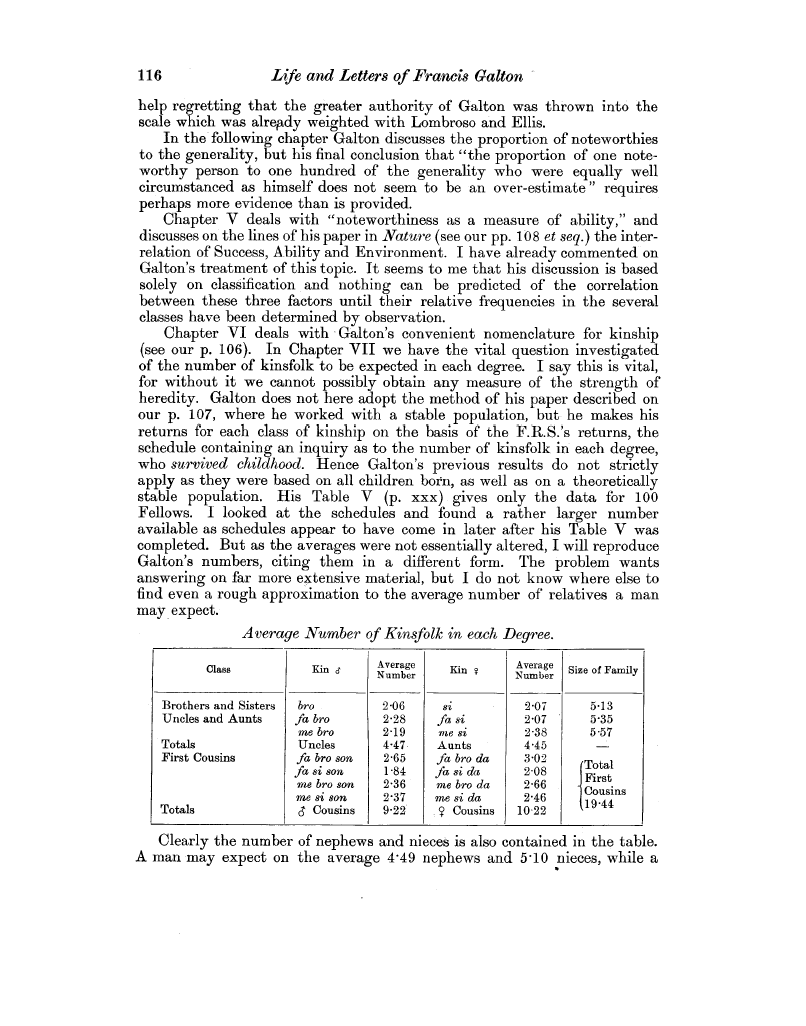| ||||||

OCR Rendition - approximate
116 Life and Letters of Francis Galton help regretting that the greater authority of Galton was thrown into the scale which was already weighted with Lombroso and Ellis. In the following chapter Galton discusses the proportion of noteworthies to the generality, but his final conclusion that "the proportion of one noteworthy person to one hundred of the generality who were equally well circumstanced as himself does not seem to be an over-estimate " requires perhaps more evidence than is provided. Chapter V deals with "noteworthiness as a measure of ability," and discusses on the lines of his paper in Nature (see our pp. 108 et seq.) the interrelation of Success, Ability and Environment. I have already commented on Galton's treatment of this topic. It seems to me that his discussion is based solely on classification and nothing can be predicted of the correlation between these three factors until their relative frequencies in the several classes have been determined by observation. Chapter VI deals with . Galton's convenient nomenclature for kinship (see our p. 106). In Chapter VII we have the vital question investigated of the number of kinsfolk to be expected in each degree. I say this is vital, for without it we cannot possibly obtain any measure of the strength of heredity. Galton does not here adopt the method of his paper described on our p. 107, where he worked with a stable population, but he makes his returns for each class of kinship on the basis of the F.R.S.'s returns, the schedule containing an inquiry as to the number of kinsfolk in each degree, who survived childhood. Hence Galton's previous results do not strictly apply as they were based on all children born, as well as on a theoretically stable population. His Table V (p. xxx) gives only the data for 100 Fellows. I looked at the schedules and found a rather larger number available as schedules appear to have come in later after his Table V was completed. But as the averages were not essentially altered, I will reproduce Galton's numbers, citing them in a different form. The problem wants answering on far more extensive material, but I do not know where else to find even a rough approximation to the average number of relatives a man may expect. Average Number of Kinsfolk in each Degree.
Clearly the number of nephews and nieces is also contained in the table. A man may expect on the average 4.49 nephews and 5.10 nieces, while a
| ||||||||||||||||||||||||||||||||||||||||||||||||||||||||||||||||||||||||||||